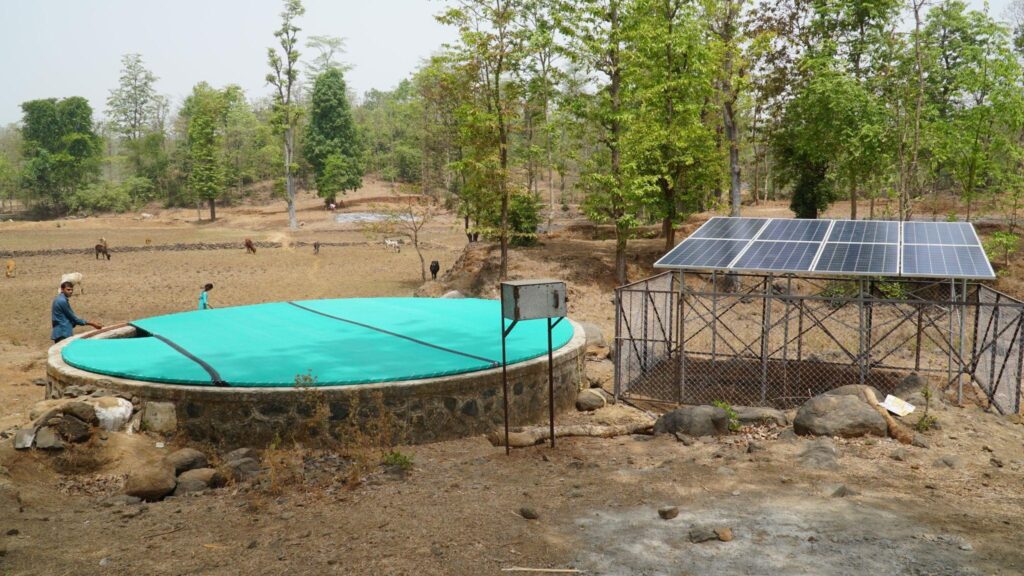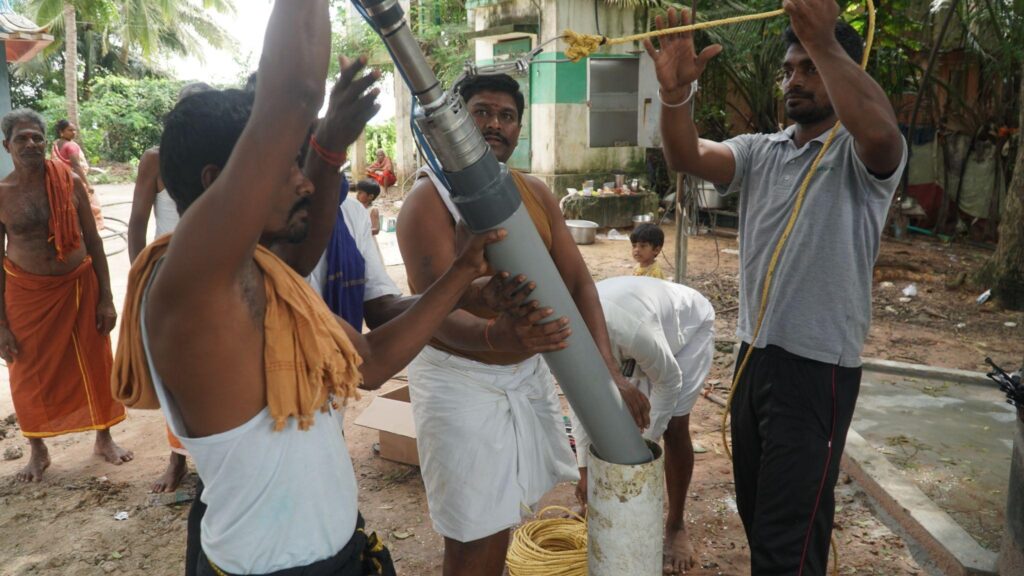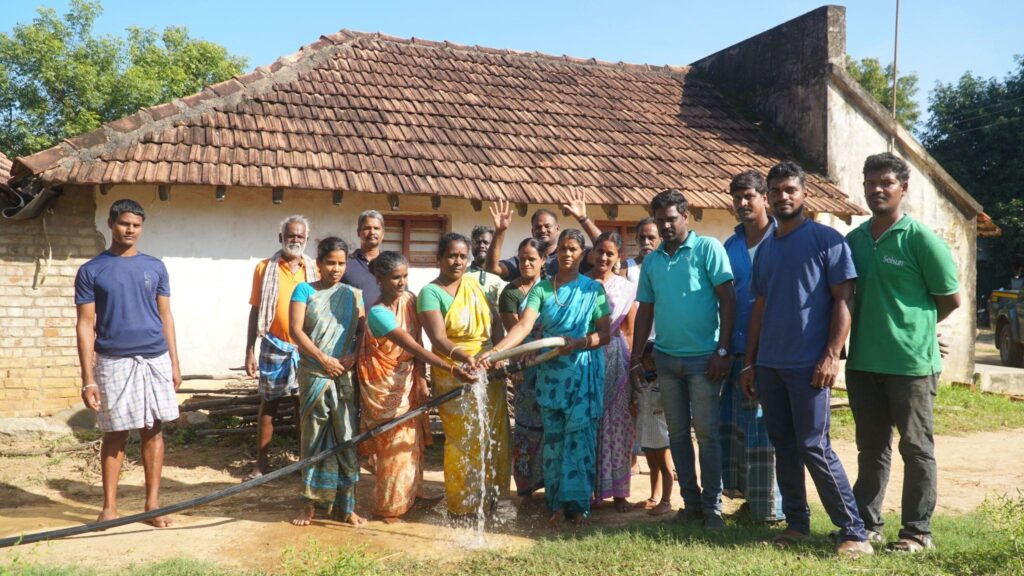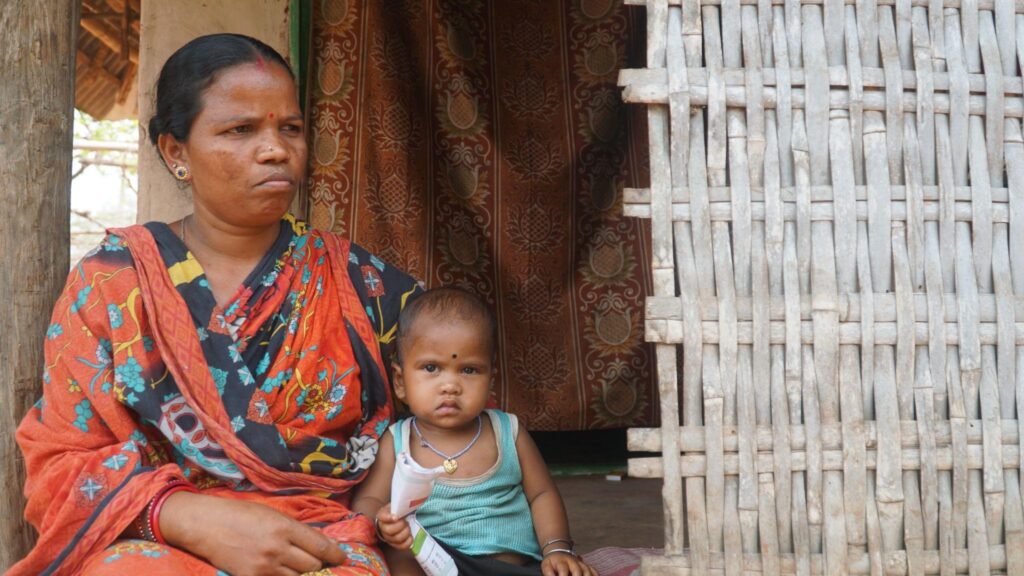With the completion of the 5th phase of Sunlit Future’s joint mission with Grundfos Foundation, we have facilitated water supply at their doorstep for about 520 rural communities in India, serving approximately 30,000 households. What began in 2015 as a humble “100 pumps for 100 villages” has now grown into a scalable model built on solid local partnerships.

Solar panels and high quality Grundfos pumps bring water closer to homes in villages where it is difficult for mainstream NGOs and government to provide piped water supply. Photo: Induja Gandhiprasad/Sunlit Future
“Our biggest strength and reason behind the success in implementation are the grass-root level NGO partners whose relationship with Sunlit Future has been long-standing. We have started exploring new geographical locations where either electricity is unreliable or is deep in forest areas, the need for a solar based water supply solution are appropriate,” explains Induja Gandhiprasad, Project Manager, Sunlit Future.
Some clusters in Tamil Nadu, Telangana, West Bengal are new explorations where solar water pumps are installed and are generally creating a greater impact, especially in cyclone prone areas and remotely accessible forest areas.

Tamil Nadu. Sunlit Future staff installing pump into the borewell along with village people. Photo: Induja Gandhiprasad
Some interesting facts about our projects executed in the year 2022 are presented below:
- Solar pumping systems were installed in 110 villages which benefits 38,533 people
- Total capacity of 200 KW solar energy was installed which replaces 39 tonnes of Co2 emission in a year
- Equivalent trees planted: 4830
- Serving about 1693 cubic metres of water/day across 110 villages

About 92% of the beneficiary population fall below the poverty line set by the government of India. Photo: Induja Gandhiprasad
Feedback from communities
Interactions with the beneficiaries have given us an understanding of a wide range of social and hygiene related issues that the systems are addressing, apart from being a sound technological solution. In many villages, the system addresses social issues regarding marriages. In many instances, people from Odisha and Maharashtra have told us that the families of young women are refusing to marry them into villages where there is no habitation level water supply or toilets at household level.
We have carried out a household level baseline survey to identify realities on ground about the beneficiaries like demographic profiles, socio-economic, health and hygiene conditions, water accessibility, etc. The survey shows that about 61% of the survey respondents practice agriculture and related activities for their primary source of income and about 92% of the beneficiary population fall below the annual income slab of below poverty line set by the government of India.
It also shows that nearly 40 % of people do not have access to treated drinking water and about 36% people do not use toilet for bathing or defecation.
“Our toilets and bathrooms were not usable for some years as we had poor water supply. We used to go out far in the fields to defecate, but once we got the solar system for water supply, we have immediately started cleaning up our toilets and repairing them so that we can use them. Every house in our village will start using the toilets again soon,” said Anjana Pradhan from the village Gunamati in Ganjam district of Odisha.
With accelerated measures by our local partner NGOs, we expect an escalation in toilet usage during our endline survey after one year of installation.


